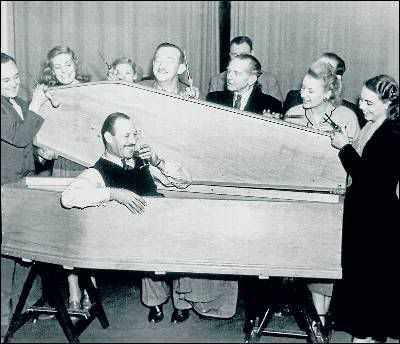History of The Nerd Part I #18: The War Magician
Who doesn’t love magic? Once when I was ten or so, I spent my entire allowance on a cup and ball trick from a magic shop. The old shop owner fogged my mind by making the little red fuzzy ball disappear in mid air only to pop up in the cup or to push the ball through the solid bottom of the cups. I took the trick home and read the manual. After I found out what was the trick was, an extra ball cupped in the palm of the magician’s hand, the entire magic spell fell apart and shattered into a couple of cheap cups and red fuzzy balls. At ten, I wished I never read the manual. I still wish I never knew. So what can magic do? Can it change the world or the perception of the world? Maybe it doesn’t do anything; or maybe it could fight one of the greatest threats the world has ever known. If only we believed that it could. Today on the Way Back Machine we find a man that believed in magic and fought a war with it, the true story of Jasper Maskelyne and his magic army.
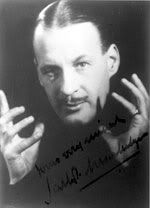
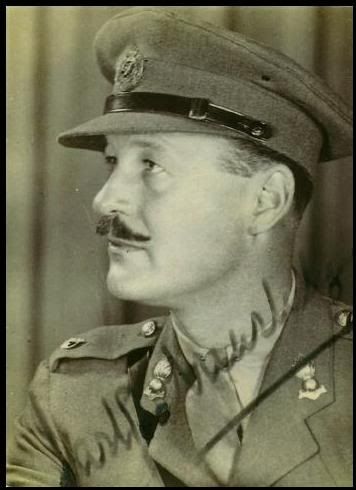
Jasper Maskelyne was born in 1902 in Great Britain. The Maskelynes were a renowned family of established stage magicians with family roots that traced back to the great royal astronomer also named Nevil Maskelyne. John Nevil Maskelyne, Jasper’s grandfather, was seen as the greatest illusionist of his time and like Houdini spent a great portion of his life exposing people that would perform cases of mystical fraud. He was also the inventor of the pay toilet. Jasper’s father, Nevil Maskelyne was also a noted stage magician that continued John Nevil’s work. He was the author of many magic books and also worked in the area of wireless telegraphy. Magic and ingenuity was in Jasper’s blood and he himself would take to the stage with great success but little did he know there would be a greater calling.
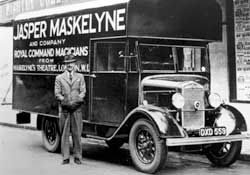
In 1939, Germany invaded Poland marking the start of World War II. This moment will be important to video game makers in the present who just can’t stop making games about the worst military conflict the world had ever seen. Also in 1939, Jasper enlisted in the British Army. Here was a guy whose background was pulling rabbits out of hats and unlocking stubbornly interlocking rings -what the hell do you do with him? Well the British were just as contused as to what use he could be and assigned him to the Royal Engineers Camouflage Corps. Jasper, hoping for adventure and glory, went off to training. But while in training he failed to convince his superiors that he would be of any use other than to supply the real troops with a source of entertainment. Random British soldiers would constantly stop him and make him do some card tricks. He was shoved around and picked on. This made him feel like the prison yard bitch, yet Jasper remained undeterred. He would one day show them his quality.
Jasper was aware that Lord Gort who was the Inspector General of the British Army, and not some Lord of the Rings villain as his name suggests, was making an inspection of the camouflage training facility. To prove the point that magic could be used in war, Jasper hid a machine gun nest using trickery and ambushed the general, but he wasn’t done yet. Later that day he called out to the watchtowers of the north, south, east and west and evoked the name of Manon to draw upon the dark energies of the Tobin Spirit Guide and made a German warship materialize in the Thames River. Ok -he used a model and mirrors. This made Lord Gort realize that illusions of armaments could be used in combat and sent Jasper Maskelyne to where their numbers were lacking in the North African Battlefields.
When Jasper arrived in Egypt in early 1941, his principle duty was to supply agents with counterfeit currency. But when Jasper arrived he complained that he had a lack of cash. The master counterfeiter without counterfeit money, his credibility was at that moment reduced. After this he was treated once again like an interloper, a birthday party sleight of hand man that should be entertaining the troops on a stage rather than in the fighting arena of the world stage.
During this time the Imam, Islamic leader of the Whirling Dervish tribe, was restricting the movements of British soldiers through their domain. They stated that any such violations would trigger a jihad. Jasper’s superiors would order him to go and confront the Imam and find a resolution to the conflict. They did this to see him fail and because of his family connections. Nevil Maskelyne, Jasper’s father, worked with Sir Lawrence of Arabia during the First World War. Prince Hassan, who was sympathetic to the British, arranged a meeting between Jasper and the Imam in Damascus. The meeting, after a few pleasantries, devolved into a full-blown magic duel. Imam used a trick involving a flexible weapon and a gimmick belt which created the illusion of a man being impaled through the stomach with a spear. Jasper countered with his version of the gun trick where he pretends to fire a bullet through the palm of his hand. By the end of this exchange of magical prowess the Imam was so impressed by Jasper’s abilities he agreed to allow the British safe passage through Syria.
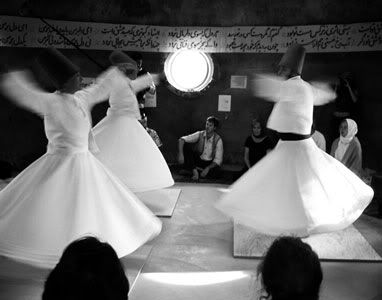
Commander of the British forces in the North African theater, General Wavell ordered the formation of a special unit dedicated to counter-intelligence and deception fashioned after the Nazi’s own tactics of espionage. This unit was known as the A-Force (cue the A-Team theme). Jasper was posted to the Camouflage Experimental Section of the unit, led by Major Geoffrey Barkas. He was posted to the section because they thought he was a witch. To aid him in dispatching the enemy by using the dark arts of mirrors and smoke, he assembled a team 14 misanthropes and rogues. Some members of Jasper’s band of roughians were pulled from the ranks of soldiers facing dishonorable discharge. More importantly, they were a band of out-of-the-box thinkers, with backgrounds in chemistry, electrical engineering, and stage construction. This group was to use their creative talents to develop deceptions for use in combat. They were informally known as the Magic Gang. Like most stage workers in high school plays they mostly hung out in the back and smoked cigarettes until it was time to actually do shit.
The Magic Gang themselves would be an invaluable source of innovative thinking. These were their key members:
Michael Hill, a down-to-earth private, willing to cut corners and break regulations, and invaluable at procuring badly needed items. He was the bad boy who all the girls wanted to “get with.”
Theodore “Nails” Graham, a skilled carpenter; he would never shut up about how Jesus was a carpenter. He could also kill a man in eight different ways with a hammer.
Bill Robson, a shortsighted cartoonist and artist. He was a pacifist cartoonist, and an artist whose name was known to thousands (except to anyone alive today). He was over six feet tall, bespectacled, and very thin, so of course he was the nerdy one. At night he would masturbate to his own drawings of Betty Boop.
Philip Townsend, an “upmarket” artist and the gay one. He too had a crush on Michael, but was always too shy to tell him.
Sergeant Jack Fuller, a more orthodox disciplinarian, who knew Cairo well and understood the ins and outs of Army bureaucracy. He was Jasper’s right hand man and confidant. He was also the liaison between Jasper and the upper brass, like Squanto but less Indian.
And there was Mr. T: the black guy.
The Magic Gang would become a force to be reckoned with. But first they had to play with camel shit.
In May of 1941, Barkas gave the Magic Gang their first big job. Their job was to magic up about ten thousand gallons of camouflage paint. The army had over two hundred British tanks that were originally intended to be sent over to Greece. Apparently someone changed their mind and sent it to the desert instead. This is great news except they were painted green and made for easy targets. Lucky for them Townsend knew about the chemistry of paints, they would need a pigment to produce the color and a liquid base to fix and preserve it. The team scoured the desert and came upon a huge dump in a warehouse in North Cairo. The warehouse contained miscellaneous junk, but in the mass of putrid matter were endless rows of tin drums that contained tainted Worcestershire sauce. This would be the base, but where would they get the pigment? Hey, camel shit looks brown! The dung patrol was born, soldiers running around like monkeys scooping up fresh camel dung from city streets and Arab caravans. The recipe consisted of Worcestershire sauce, flour, cement and camel dung. In a week they were able to produce two thousand gallons of paint. The tanks were painted and left out in the sun to kill the stench of camel shit. Maskelyne told his men, “Remember, when someone asks you if we can do the job, the answer is yes. Don’t think about it, don’t worry about it, the answer is yes.”

General Wavell was under orders from Churchill to make an offensive maneuver against the Afrikakorps, the German expeditionary force in Libya and Egypt, codenamed Operation Battleaxe. Maskelyne’s task was to maneuver their tanks secretly into position without being spotted by German reconnaissance planes or ground observers. Maskelyne made a series of fake tanks, but the stroke of genius was to cover the real tanks with lightweight frames that made them look like innocent trucks. These frames were called sunshields. To complete the illusion, friends in the Mechanical Experimental Establishment developed a device attached to the rear of the camouflaged tank to erase the tank tread and replaced it with truck tracks. The sunshields were an effective form of camouflage but Operation Battleaxe itself was an unfortunate and embarrassing failure for General Wavell. During the battle, ninety-one British tanks were destroyed while only twelve German tanks were lost. This led to General Wavell’s replacement with General Claude Auchinleck. The war moved on.
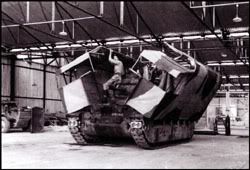
The vital Mediterranean port of Alexandria was being brutally ravaged by nighttime raids courtesy of the German Luftwaffe. There were a number of proposed solutions from covering it up to using mirrors and optical illusions, but all were unfeasible or impractical. Maskelyne pondered this and said, “We can’t cover it up. We can’t disguise it. And we can’t hide it. There’s only one solution left to us, isn’t there? …We’ve got to move it. ” Jasper and crew went on to build a massive decoy three miles away from Alexandria at Maryut Bay. They ran lights on the ground and built dummy buildings so that, in the night sky, it was indistinguishable from the real thing. They even built lights to simulate return fire. For eight nights the Luftwaffe came and bombed the wrong harbor until they received orders to concentrate their efforts on Operation Barbarossa, the secret invasion of Russia.
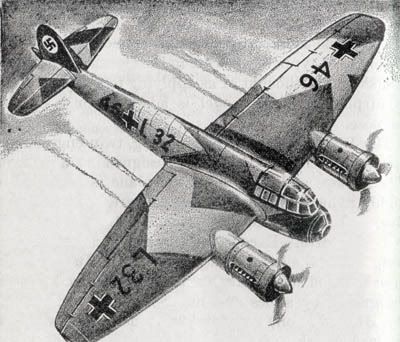
Major Barkas would have more work for Maskelyne. He asked if there was a way to camouflage the Suez Canal, a vital supply line. The answer was a resounding yes even though the Canal was 107 miles long. They thought and thought on the matter. Jasper finally had the solution to create 21 “dazzling lights” down the length of the canal. These were powerful searchlights, with 24 different spinning beams that projected a swirling, cart wheeling confusion of lights up to nine miles into the sky. The symphony of light confused and blinded the enemy bombers. Maskelyne called it the whirling spray. I would have called it The Symphony of Light, the Whirling Spray sounds like a knock off Slip and Slide or some unspeakable sex act; but no matter, it worked.
Jasper and the Magic Gang’s crowning achievement would be the decisive battle of El Alamein. This was the battle that was the turning point for the British in the North African campaign. Lieutenant-General Bernard Montgomery took command of the British Eigth Army from General Claude “I didn’t do much shit in this story” Auchinleck in August 1942. Montgomery devised a massive offensive for October 23rd, 1942. The attack was codenamed Operation Lightfoot. Montgomery’s plan of attack was to fool the Germans with not only the date of the attack, but at which precise point the attack would be made. Montgomery would personally meet with General Barkas and Jasper Maskelyne and two other dudes I haven’t brought up or care about. He authorized them to develop an urgent deception plan. This would be Maskelyne’s moment of glory: to pull off “the greatest magic trick in history.” Maskelyne had to hide the assembling army in the north while simultaneously creating an illusion of a second army gathering in the south. The deception was codenamed Operation Bertam.
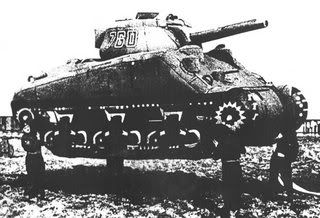
To deceive the enemy of the date of attack and the location from which the attack would occur, they built a fake water pipeline, codenamed Diamond, snaking its way south. The German reconnaissance planes would study the daily progression and calculate that Diamond wouldn’t be operational until November. Real tanks disguised in sunshields to look like trucks were assembled in the North while dummy tanks gathered in the South. Stockpiles of fuel for the main army were assembled and hidden in advance. They did this by creating fake dumps with waste materials such as empty packaging and stuck them under camouflage nets. The Axis would naturally notice this but would do nothing. As time went on and seemingly no changes were made to the dumps they would be ignored. In actuality, the waste materials were moved out and real supplies moved in. In the dummy army to the South, a small team of soldiers were under orders to simulate signs of mass activity by driving trucks around for long periods to create extensive tire tracks. The British attacked on October 23 on the northern front at the same time a small scale diversionary attack on the south was made. By November 11, 1942, it was made clear that the British were victorious. The German Defeat at El Alamein would mark the end of the German expansion in Africa.
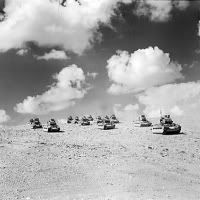
After the war, Winston Churchill praised the War Magician for his role in the war, but only in private. No medal was awarded to Jasper, no honor or recognition was made. He is only remembered in history through limited written records of his exploits as if history itself sought to swallow him whole and forget him. Jasper would return to the stage, but would never retain the level of success he had before the war. The public had lost interest in magic and stage magicians. Eventually he would move back to the land he tried to make his mark in, Africa. In Kenya, he settled down and opened a driving school. He died in 1973. Jasper Maskelyne may be one of the few people in history to have ever successfully fought in a war without having to fire a single shot; which, if you ask me, is magic in of itself.

